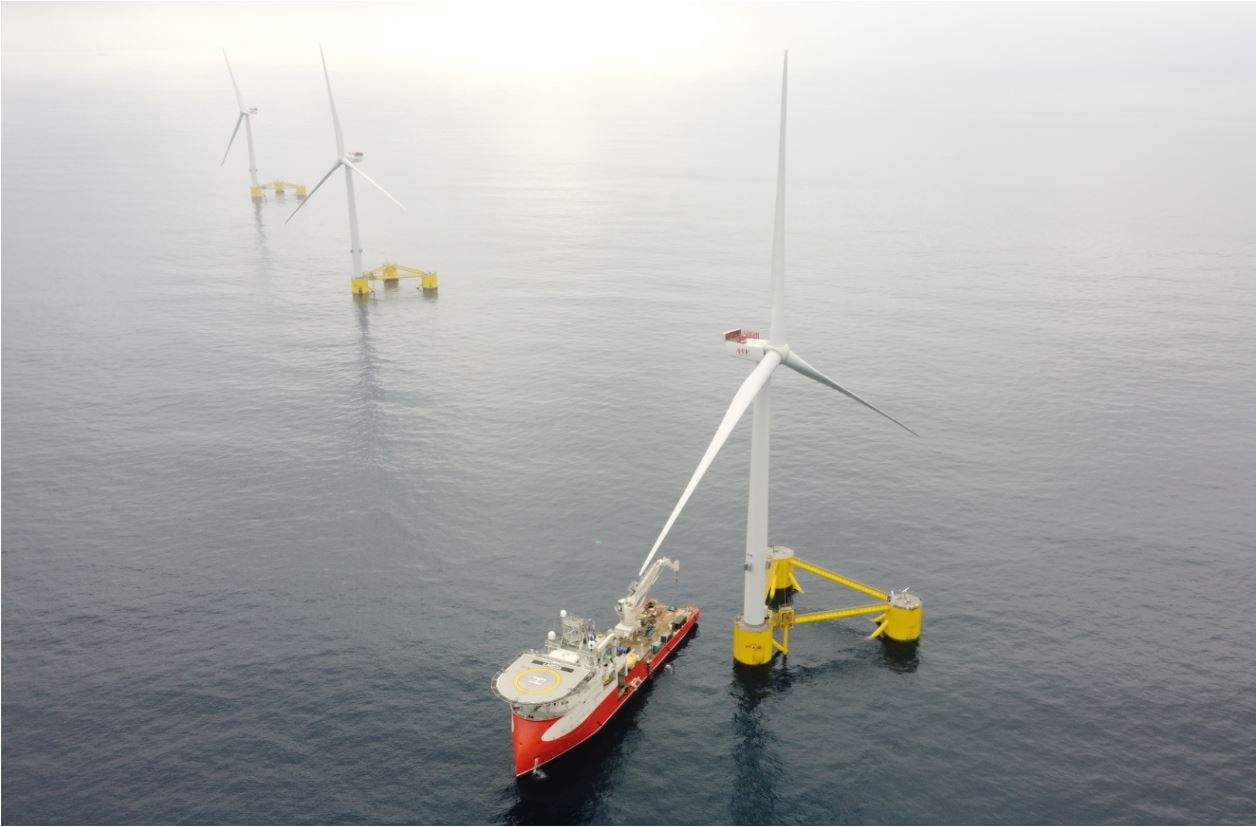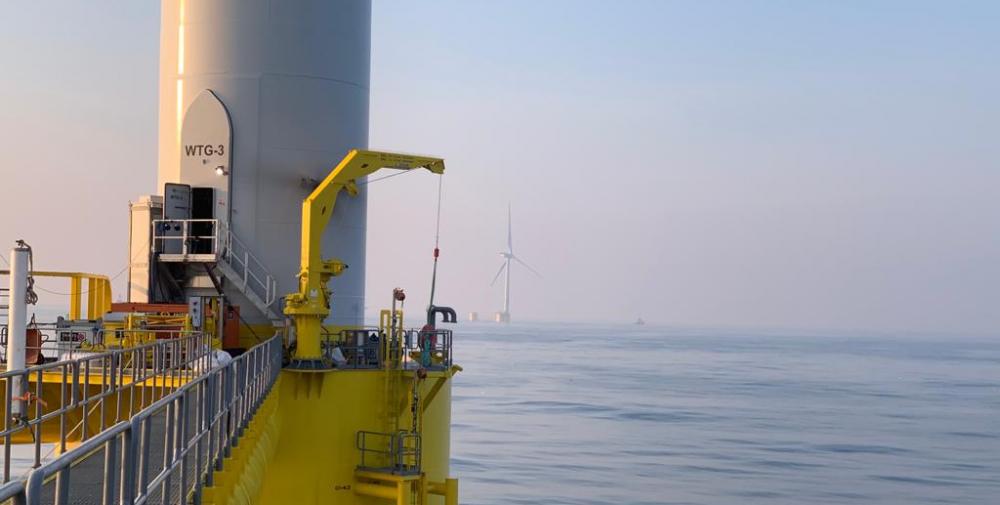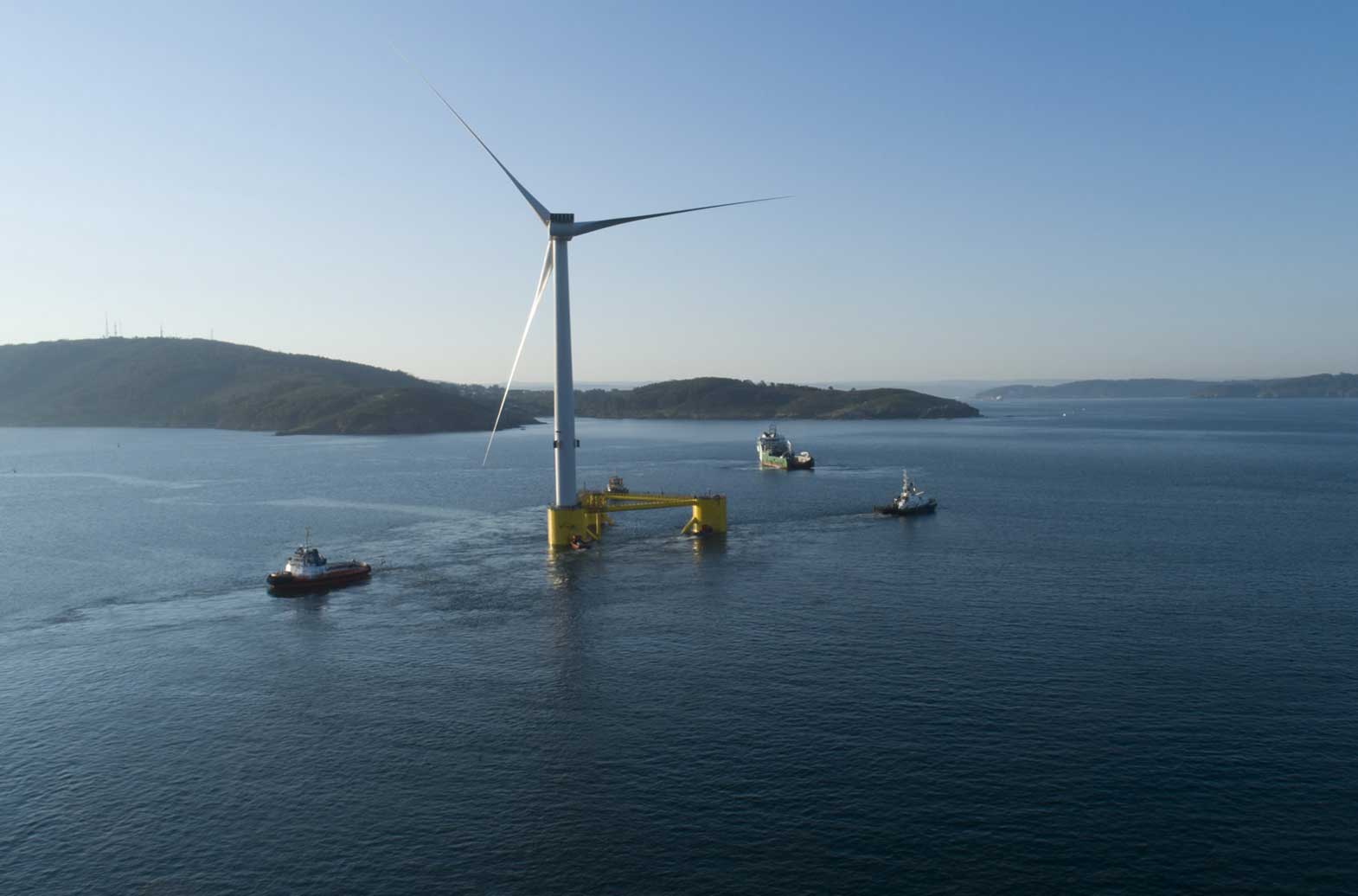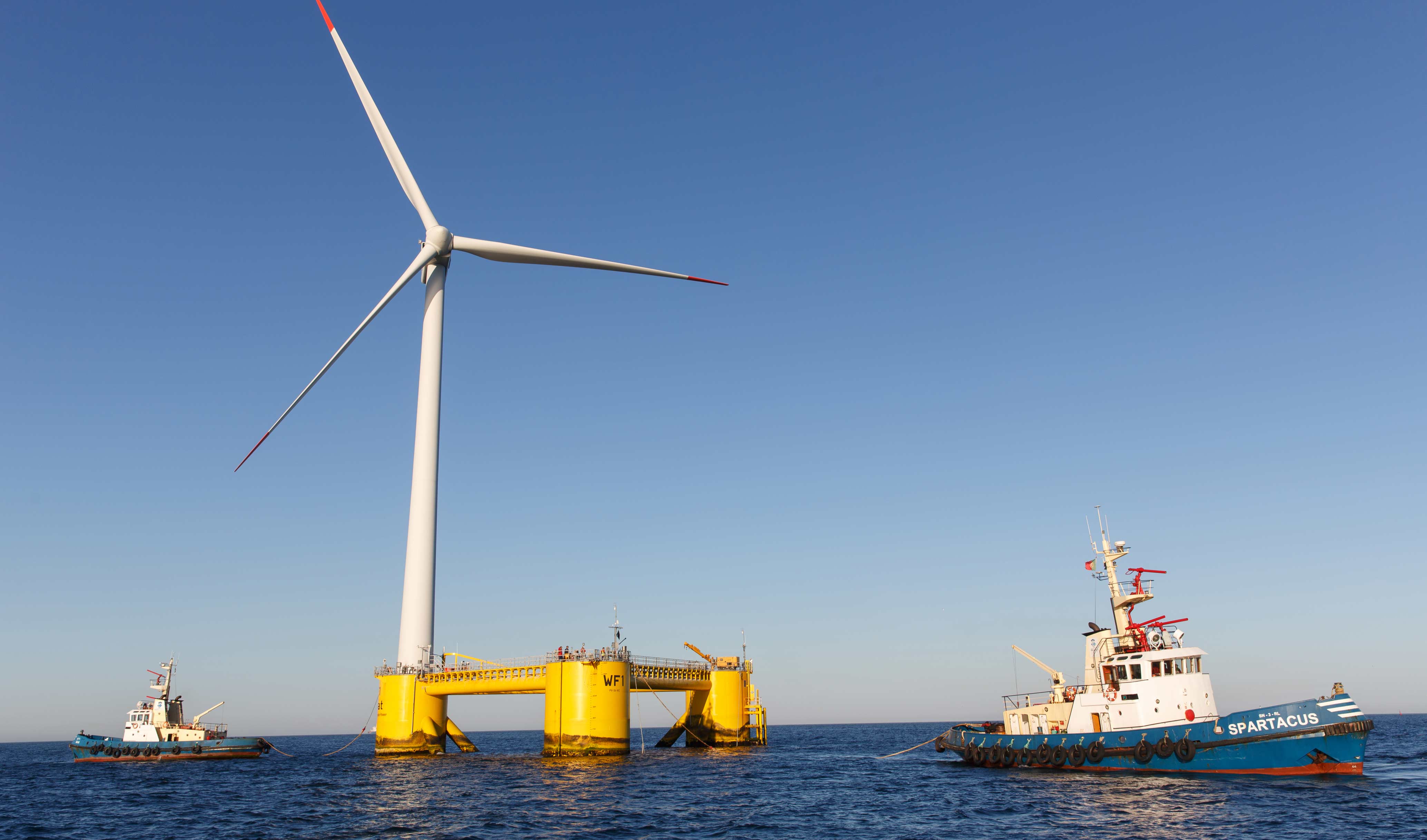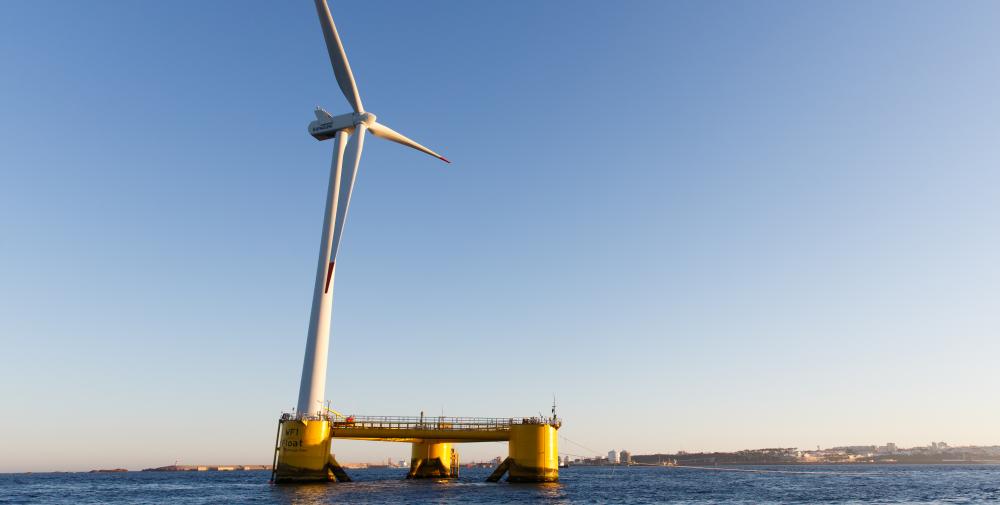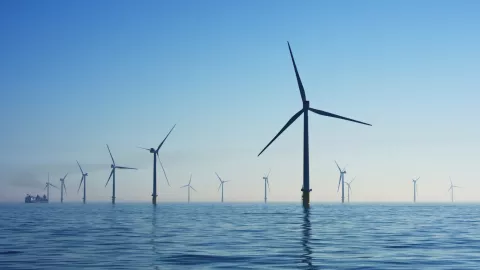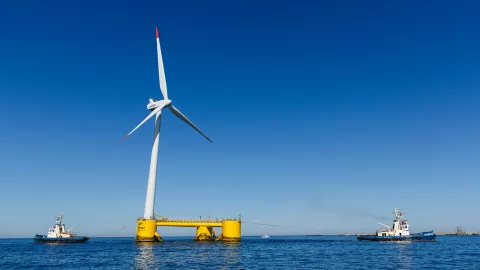Floating offshore wind-power generating platform
The WindFloat Project has developed an innovative technology to allow the exploration of wind potential at sea, at depths of over 40m. The project's innovation focus was the development of a floating platform, based on the experiences of the oil and gas industries, to support multi-MW wind turbines in marine applications.
The floating platform is semi-submersible and is anchored to the seabed. Stability is due to the use of "water trap plates" at the bottom of the three pillars, associated with a static and dynamic ballast system. WindFloat adapts to any type of offshore wind turbine. It is built entirely on land, including the installation of the turbine, thus preventing the work from having to be carried out offshore, which would have an impact on the marine environment.
WindFloat Atlantic starts supplying clean energy
The first of the three platforms of the WindFloat Atlantic project was successfully connected in December 2019, after the installation of the cable that runs the 20 kilometers of distance that separate the wind farm and the station installed in Viana do Castelo. This was an important step for the national and European energy sector, since, by connecting the first wind tower to land, the first floating wind farm in Continental Europe started to supply clean energy to the electricity system.
Departure of the third and last platform of the Windfloat
In May of 2020, the project took another decisive step with the departure of the third, and last, of the three platforms off the coast of Viana de Castelo. Since it became 100% operational, the wind farm, with 25 MW of installed capacity, will be able to generate enough energy to supply the equivalent of 60 thousand inhabitants per year. The structure of the floating platform - with a height of 30 meters and a distance of 50 meters between each column - allows the use of the largest installed wind turbines on a floating surface in the world, of 8.4 MW each.
With this technology, the park contributes to increasing the generation of renewable energy and promotes a considerable reduction in costs associated with its life cycle.
Precommercial phase: Windfloat Atlantic
After successfully testing the technology for five years, the next step in the development of WindFloat technology was the pre-commercial phase, called WindFloat Atlantic (WFA), the first floating wind power plant in continental Europe.
To support the development of this pioneering technology, the European Investment Bank (EIB) granted, in October of 2018, a loan of 60 million euros to Windplus SA, the company that develops the Windfloat Atlantic, and which is owned by Ocean Winds (OW) (54.4%) – a joint venture between EDP Renováveis and Engie -, Repsol SA (19.4%) and Principle Power Inc. (1.2%). In addition, the project was also supported with 29.9 million euros from the EU program, NER300, and up to 6 million euros from the Government of Portugal, through the Portuguese Carbon Fund.
The installation of the first WindFloat Atlantic turbine on the floating platform was carried out in July 2019, in the port of Ferrol, in Spain, constituting an important milestone for the WindFloat Atlantic project and for the offshore wind energy sector worldwide, given that it was the largest turbine ever installed on a floating platform.
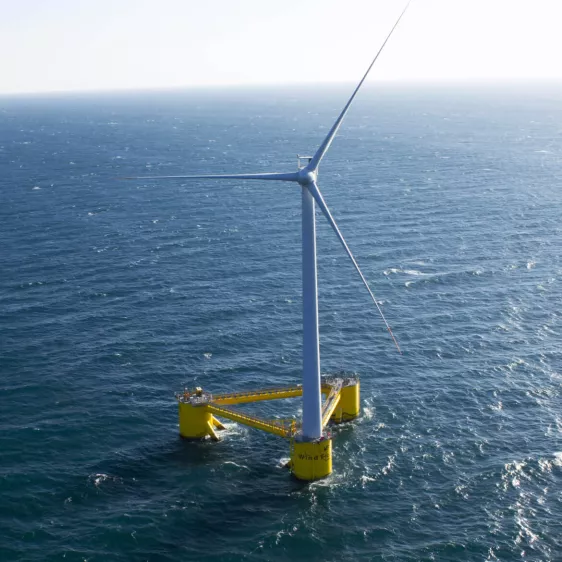
60" about Windfloat
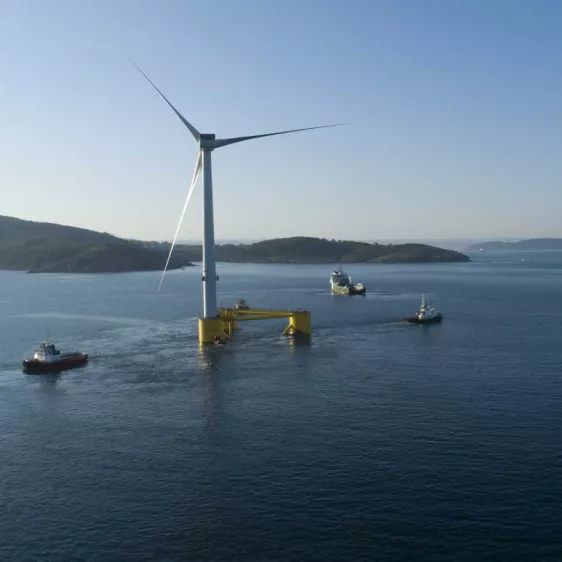
Benefits of Windfloat
The three turbines that make up the wind farm are mounted on floating platforms moored to the seabed, for a total installed capacity of 25 MW, equivalent to the energy consumed by 60 thousand families over a year. What's more, this technology has enormous advantages that make it more accessible and cost-effective, including mounting it using conventional land cranes on dry land (in port), and using common shipping methods such as tugs instead of more expensive offshore installation vessels.
WindFloat Atlantic uses advanced technology from Principle Power, which makes it possible to install floating platforms in deep waters, previously inaccessible, and where the abundant wind resources can be harnessed. The wind farm will be located 20 kilometers off the coastline of Viana do Castelo, where the waters reach a depth of 100 meters.
This project demonstrated the low risk profile and economic competitiveness of the technology, paving the way for future commercial offshore floating wind farm structures.
Installation of the Windfloat 1
The WindFloat 1 Project involved the development and construction of a demonstration unit, using a 2 MW commercial turbine. The unit was installed on the Portuguese coast, near Aguçadoura, and it was connected to the grid at the end of December 2011. The project is the first offshore wind deployment in the world, without using the traditional piles that are used in this type of infrastructure.
This was the first floating offshore wind turbine in the open waters of the Atlantic, and the first implementation of a semi-submersible structure to support a multi-megawatt wind turbine.
Windfloat 1 operated for five years with high availability, producing more than 17GWh, in a sea with waves of more than 7 meters and remaining operational even with waves of 17m.
See some photo of the WindFloat:
Labelec's participation description
- Project monitoring from the construction phase until its’ commissioning;
- Prototype operation and maintenance management;
- Facility performance indicators analysis;
- Collaborative initiative under the European FP7 Program for the development of pre-commercial technology.
